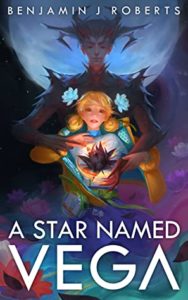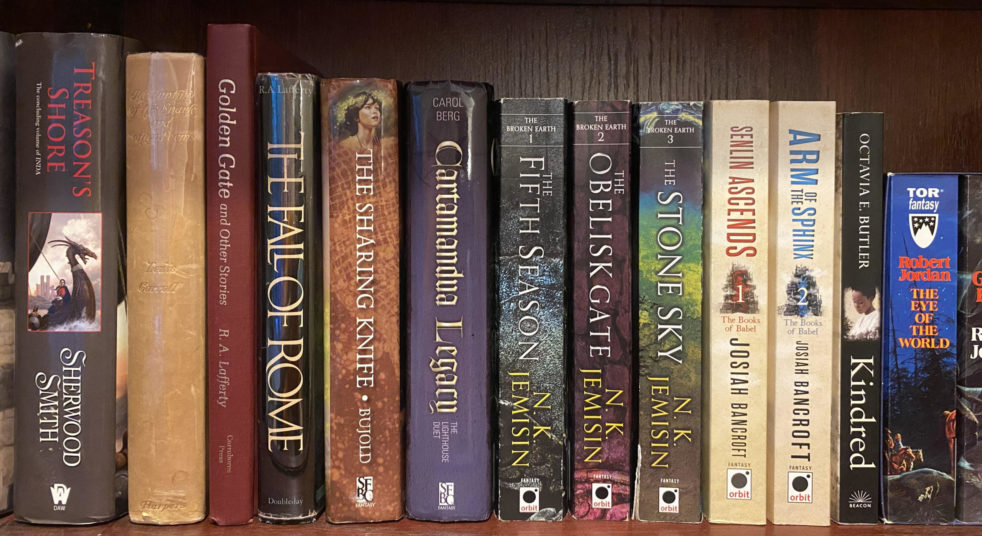
I’m closing the inaugural Self-Published Science Fiction Competition (SPSFC) with two finalists that had extremely high ratings floors in the first two rounds. Today, I’ll be looking at A Star Named Vega by Benjamin J. Roberts, a novel that received a score of at least 8/10 from nine of the ten judges that rated it on the way to the finals.
A Star Named Vega alternates between two main perspective characters. Aster is a young teenager with a penchant for subversive art and a father called to the Vega system to be part of a classified research program into a cache of artifacts recently discovered on an out-of-the-way moon. Rel, on the other hand, is a genetically engineered Skarid soldier. After a violent revolt against their AI creators, his race is known for warfare and piracy. And when their intelligence network receives word of a weapons cache that could destroy his people, Rel is sent to the Vega system to ensure researchers have no opportunity to unlock the dangerous secret they’ve uncovered.
Though I found Aster a bit more relatable, I was immediately intrigued to see two main characters on the opposite sides of the main conflict. Though still young, Rel was a bit battle-hardened and fell into the archetypal category of young soldier fighting for his homeland. The Skarids certainly didn’t see themselves as merely pirates, and it was easy to sympathize with what Rel saw as a fight for the survival of his people. And yet Aster’s wealthy, technologically advanced society showed few cracks of dystopia under the shining surface—this appeared to be no simple case of misunderstood rebels fighting against an oppressive government.
And I appreciate that as the story progressed, it didn’t cast either society as obvious heroes or villains. But I did feel like the individuals were cast much more clearly. It may be that there were villains on either side, but their actions were so egregious that it robbed Rel and Aster of their most difficult moral quandaries, providing unambiguous individual enemies even if the societal conflict was not always clear.
As for that conflict, I really enjoyed how Aster’s jockeying for points in an online subversive art competition played into a broader story whose chief players had otherwise been less herself and more her friends and family. Her befriended boy genius felt like he could’ve walked out of any number of YA stories, and Rel’s story wasn’t out of the realm of the ordinary for a young soldier forced to question his commanders for the first time–though both are reasonably well-executed–but it was it was nice to see something a little different with the artist lead.
Overall, it’s a well-executed story with a few aspects that intrigued me but nothing that paid off in such a way that would really sink the hook. It’s solid work that seems aimed at the lower end of the YA audience, and I think the enjoyable lead and interrogation of both societies will serve nicely for that target. For an adult reader, it’s a book that goes down smoothly but doesn’t have that element that really makes it stick with you.
Recommended if you like: sci-fi aimed at young teens.
Can I use it for Bingo? It’s hard mode for Self-Published and Standalone (and will be for Award Finalist, if it doesn’t win). It also has Family Matters and an Author Who Uses Initials.
Overall rating: 12 of Tar Vol’s 20. Three stars on Goodreads.
SPSFC score: 6/10 for my personal score. We will await results from the other judges before announcing an official team score.
